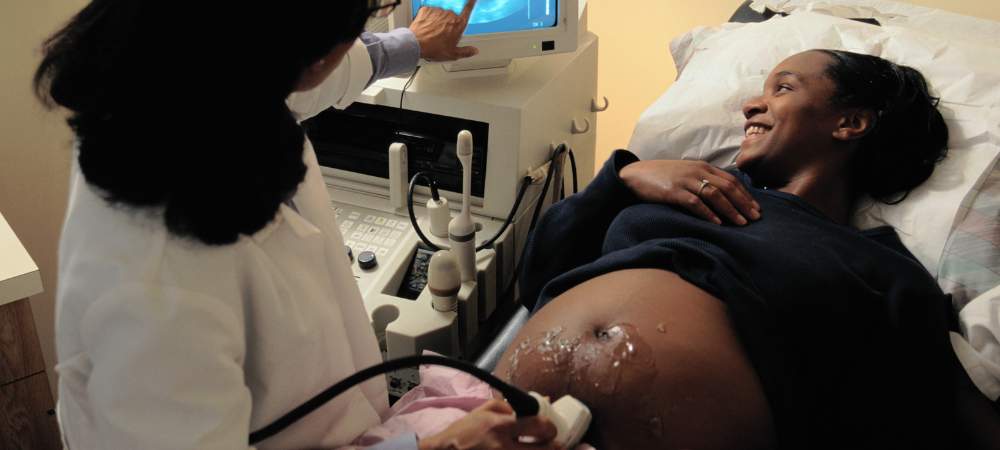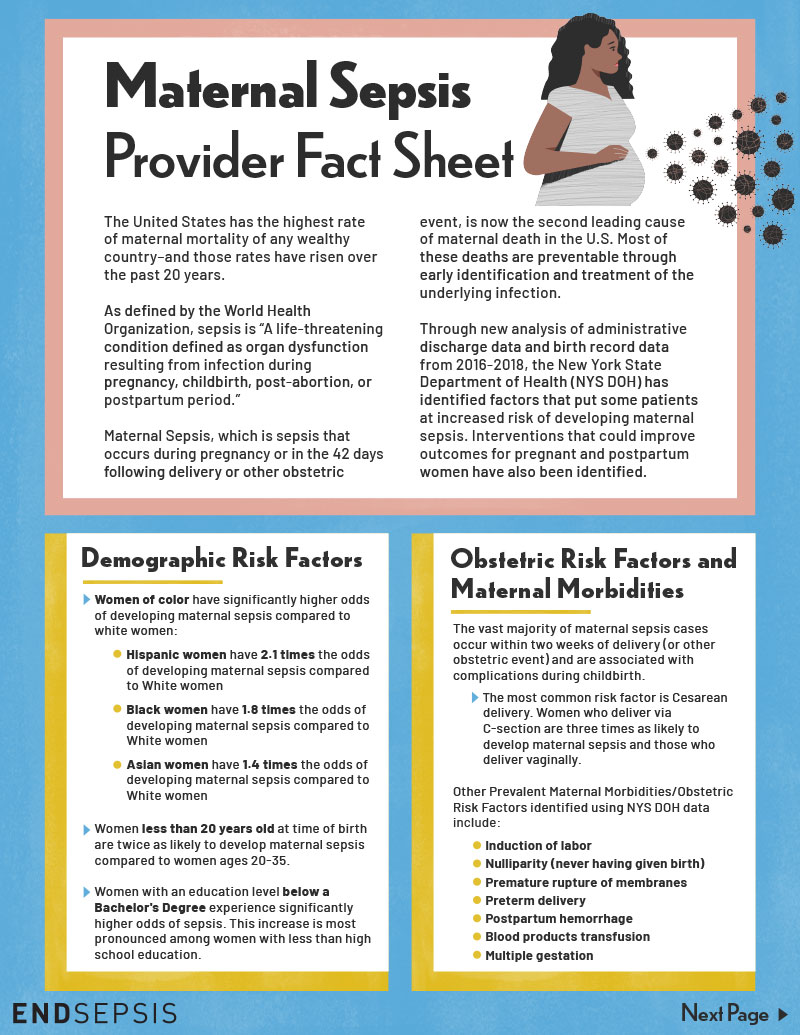
Maternal Sepsis Provider Education.

In 2019, END SEPSIS was awarded a contract by the Department of Health and Human Services’ BARDA DRIVe program to develop an initiative address the maternal sepsis crisis. The United States has the highest rate of maternal death in the developed world and maternal sepsis is the second leading cause of pregnancy-related death in the United States. The work resulted in the develop of educational resources for women’s health providers and in the End Maternal Sepsis campaign to educate pregnant people on the condition and its risk factors. Visit End Maternal Sepsis to access patient education materials. It also produced several provider education webinars, developed in partnership with the New York State Department of Health. These can be viewed below.
Download the Maternal Sepsis Provider Brochure here
Download the Maternal Sepsis Provider Fact Sheet here
1. New York State Department of Health Collaboration.
WEBINAR 1: Maternal Sepsis: New Data, New Approaches to Improving Care.
On June 9th, 2021, END SEPSIS, the New York State Department of Health and the American College of Obstetricians and Gynecologists (ACOG) presented a webinar focused on methods used and major findings from the NYSDOH analyses. In addition, speakers from ACOG discussed relevant bundle
s and recognition and treatment for this population. You can view the complete webinar by clicking the video below or click here. You can apply for CE credits for attending the webinar. The application information is posted below the webinar.
To record attendance for this session:
www.northwell.edu/cmeactivitycheckin
Enter ACTIVITY ATTENDANCE CODE: 79057
WEBINAR 2: Maternal Sepsis in New York State: Using New Data to Inform Practice
On September 13th, World Sepsis Day, END SEPSIS, Northwell Health and the New York State Department of Health presented a webinar that explored how the new data on maternal sepsis in New York State can guide efforts to improve maternal sepsis prevention and identification. We heard from experts from the midwifery, doula and clinical fields and data scientists from NYS Department of Health. You can view the webinar below. CE credits are available and the information appears below the video.
To record attendance for this session:
Visit www.northwell.edu/cmeactivitycheckin
Enter ACTIVITY ATTENDANCE CODE: 81098
2. Home Care Association NY Collaboration
WEBINAR: Maternal and Infant Sepsis Prevention in NYS: Home Care’s Unique Role
In 2023, END SEPSIS received funding from the Mother Cabrini Health Foundation to promote its maternal sepsis resources to pregnant people and new parents and to educate home health workers and other community health providers about maternal sepsis and those populations at increased risk. Home health clinicians play a key role in providing care to mothers both antepartum and postpartum, and their infants, including those who return home following one day after birth, those in high-risk situations, and those faced with health disparities, socioeconomic, cultural, and familial challenges and difficulty accessing services.
The maternal sepsis webinar, produced by Home Care Association of New York State (HCA) in collaboration with END SEPSIS, enables all provider types, health plans, nurse-family partnership providers, and other community health partners to learn from expert faculty about sepsis, maternal sepsis, New York State standards for maternal care in relation to home and community-based maternal services, HCA’s home health sepsis screening and intervention tool, HCA’s maternal sepsis patient education zone tool, HCA’s screening tool for pediatric sepsis, best practices for educating maternal patients, and resources and tools for provider and health plan use with patients.
The full webinar can be viewed on demand below. The presentation, including HCA’s sepsis screening tools, can he found here: Maternal and Infant Sepsis Prevention in NYS: Home Care’s Unique Role.
Our thanks to the Mother Cabrini Foundation and HCA for their partnership.


